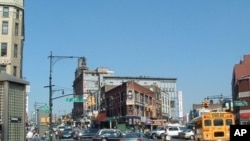In the early 20th Century, more than two million African-Americans left their homes and small farms in the South and moved to northern industrial cities to escape overt racism and search for better work and happier lives.
One-half of the large African-American population left Beaufort County, South Carolina, for example, and headed north.
The massive exodus came to be called "The Great Migration," and a second one followed in the years after World War II.
By 1970, when census-takers found that 80 percent of African-Americans lived in big cities, black America had become an overwhelmingly urban population.
Now there's a massive reverse migration of blacks back to what the USA Today newspaper calls "their Southern roots." Between 2000 and 2010, for instance, Florida’s African-American population grew by 587,000, Georgia’s by 579,000, and North Carolina’s by 297,000.
“It’s all about quality of life,” Mike Morton told USA Today. The retired corrections officer, left New York City for the small town of Palm Coast, Florida. “When I visit New York now, it’s culture shock. I don’t hear car horns down here. As soon as you get to New York, you’re hearing thousands of them.”
The 2010 U.S. Census found that 57 percent of American blacks now live in southern states. That’s the highest percentage in half a century.
Some African-Americans tell interviewers that they moved back - or to the South for the first time - for warmer weather, to distance themselves from high urban crime, to reunite with southern relatives or to take advantage of lower home prices and taxes.
But others say they regret the move. Too many retirees about, they say. Not enough job opportunities, public transportation, or cultural attractions that appeal to them.
The next decennial census in 2020 should tell us whether the influx of African-Americans into the South will be large enough to be considered a third Great Migration.













